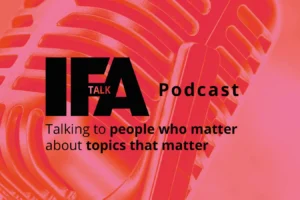Since the launch of ChatGPT in 2022, only 27% of professionals across the UK admitted to having tried the tool at least once.
Fast forward two years however, and usage has more than doubled, with 62% admitting to using it at work, but how likely is it for employees to enhance their job prospects through the use of AI?
AI expert Christoph Cemper, on behalf of AIPRM, has provided key tips and tricks for identifying the use of AI in job applications and CV’s.
Five tell tale signs for spotting AI use in the hiring process:
Spotting AI-generated content in CVs or during the hiring process can be a challenge, but it is manageable with a bit of vigilance and the right techniques. Here are five human-centred tips to help identify AI use:
- Overly polished language
AI tools tend to produce content that is grammatically impeccable but may lack a human touch. Signs include:
· A flawless yet monotonous tone: The CV might read as too perfect, lacking personal anecdotes or a unique voice.
· Uniformity in phrasing: AI might use repetitive phrases or a uniform writing style throughout different sections. For example, a CV filled with immaculate bullet points like “Managed comprehensive integration strategies” without any variation or personal flair might be a red flag.
· The use of overly long or complex sentences that include patterns or phrases that ChatGPT commonly employs such as ‘embarked, delved, invaluable, relentless, groundbreaking’.
2. Unusually Generic Descriptions
AI can generate generic descriptions that might not fit the specific job or industry context. Look for vague accomplishments without quantifiable results or context. Real professionals often use specific terms related to their field that AI might overlook or generalise.
3. Mismatch of skills and experience
The skills listed on the employee’s CV might not align logically with the candidate’s experience or job history. For example, a CV that lists advanced skills in software not commonly used in a candidate’s industry or experience level could suggest AI-generated content.
4. Absence of personal anecdotes
Look for CVs that lack stories or specifics about past projects, challenges, or personal achievements. Descriptions might be too broad or lack customisation to the individual’s actual experience.
For example, a cover letter or CV that doesn’t mention the company’s name, specific projects, or role details, and instead uses placeholder-like statements.
5. An inability to explain or solve real-world problems during interview
During interviews, ask about specific projects or tasks mentioned in the CV, seeking specific contributions or insights.
If a candidate’s CV claims that they “led a team to improve customer satisfaction,” ask for examples of specific challenges that they faced during the project and how they resolved them. AI-generated responses might falter on such detailed and situational questions.
How to know if your employees are using ChatGPT at work:
Christoph Cemper, on behalf of AIPRM, comments:
“On a results level, the most obvious indicators may include an inability to explain, remember, or defend certain results. Spotting sudden improvements or changes in the employee’s writing quality, style, or tone and finding inconsistencies across results may also be a dead giveaway.”
“On an infrastructure level, you could utilise network traffic monitoring tools to detect access to Chat GPT, though employees might circumvent this by using personal devices or mobile networks.”
“Although the risks of using unreviewed or “hallucinated” information could lead to misunderstandings, errors and concerns over security and privacy issues, the level of intelligence AI holds could benefit the workplace through increased employee productivity and output levels across writing, coding, brainstorming, idea generation and visual creation.”
Four tips on implementing AI positively in the workplace:
- Implement guidelines and policies covering acceptable use, privacy, security, personal data protection, and confidentiality of company secrets.
2. Provide training and resources, including how-tos, workflows and lists of approved or suggested prompts for the team.
3. Ensure a consistent writing style and tone, including the use of custom profiles or styles in prompts to align with brand guidelines.
4. Emphasise augmentation rather than replacement of human capabilities.















